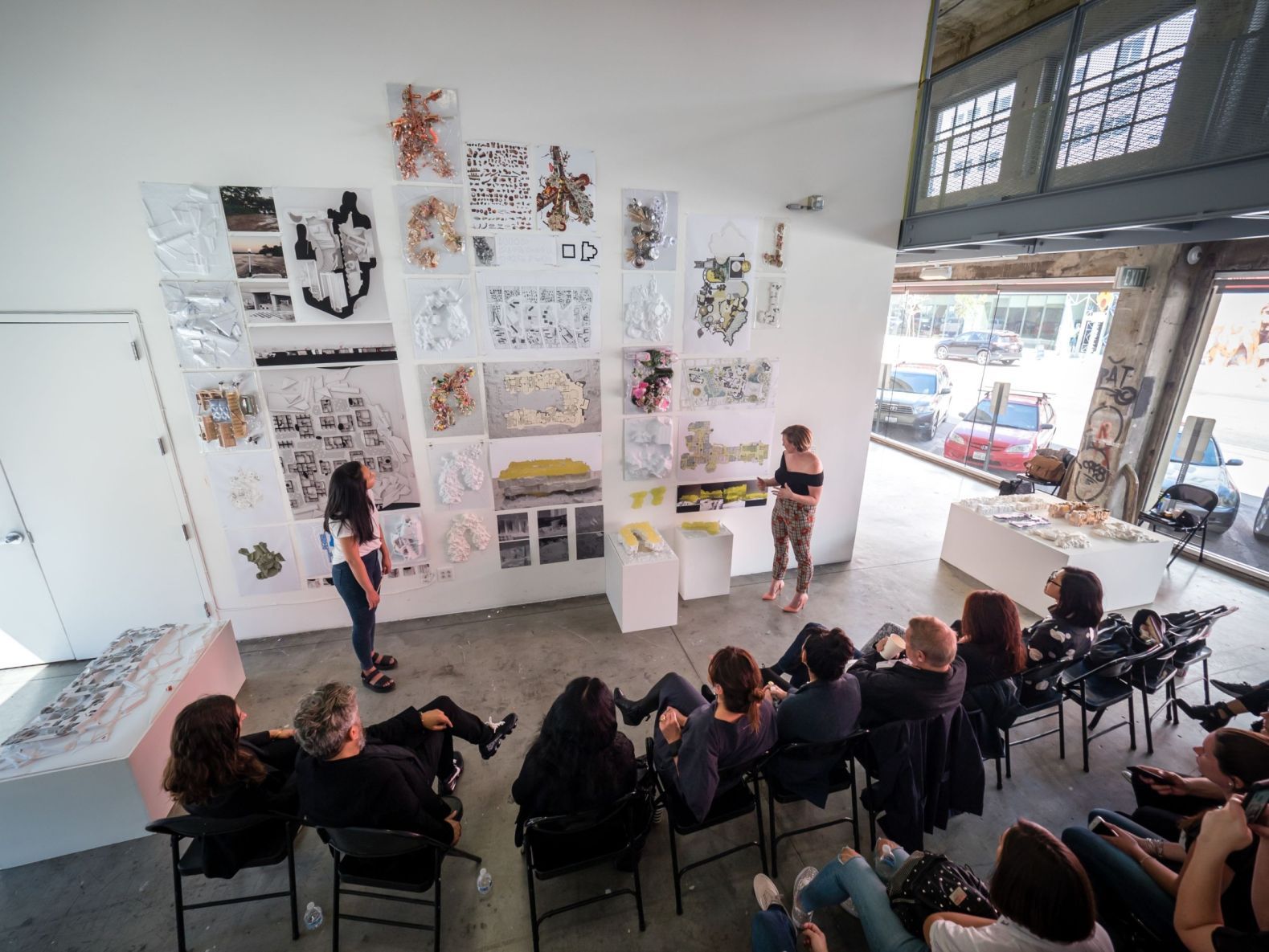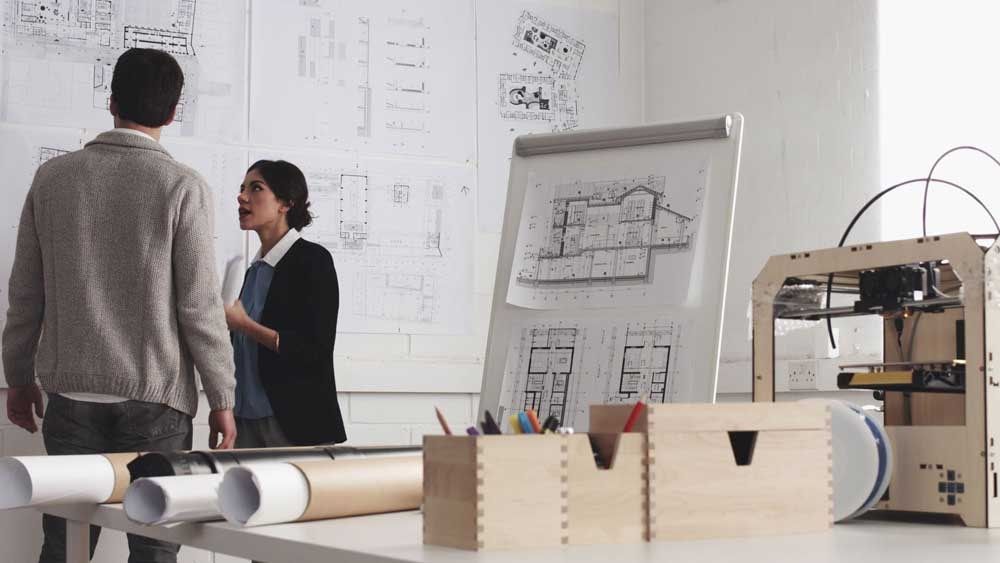PROGRAMS
Join thousands of people who organise
work and life with Novatr.
12 Architecture Portfolio Tips to Make Your Application Stand Out
Thet Hnin Su Aung
10.5 mins read
July 09

Watch the video below to hear industry exerts talk about what makes a great architecture portfolio.
Tips to Create a Fantastic Architecture Portfolio
1. Start Documenting Your Work Early On
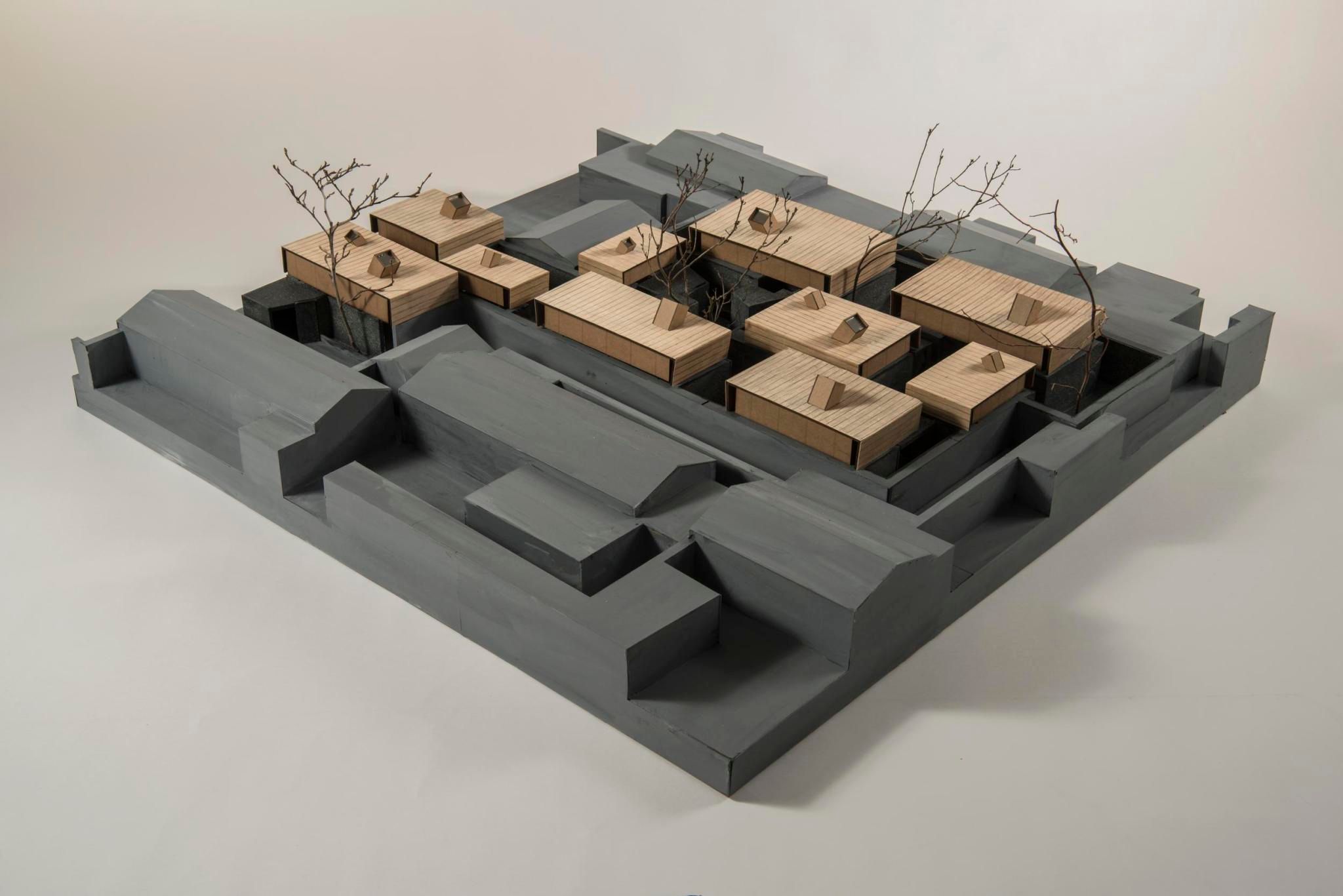
Architecture physical model (Source: www.tumblr.com)
One of the most vital steps in creating a portfolio is documentation. In fact, you have already started your portfolio if you have started documenting your work. It is a good habit to save your digital files, hand-drawn drawings (by scanning) and physical models (by photographing) of all your projects. Co-curricular activities related to the course, such as workshops, site visits and tours, can also provide insights into your interest and experience so don’t forget to keep a record. You can decide which ones should be included in the portfolio later on.
Many students see documentation as a boring task, and unnecessary, especially in the early years of study. But what happens if you do not document your work? Comes the time to create the portfolio, you may find yourself scrambling to find suitable projects, going through years worth of work and activities.
When you document your works right from the beginning, you will also get to see your progress over the years. This progress indicates how much you have improved through the course of your study or career. So, portfolio or not, document your work early and see your growth in a few years’ time.
2. Research! Research! Research!
Honestly speaking, research is and should be part of our lives. Before you begin preparing, you should research what requirements you need to fulfil in an architecture portfolio for a job or university entrance application (if you are reading this, you have already started your research!). Your research should also extend to architectural firms’ profiles to better understand their ideas, how they work and even application requirements. They will be extra helpful during interviews since you can apply this knowledge and impress your future employers.
3. Show Quality Over Quantity

Portfolio by Ruxin Xie (Source: https://www.behance.net/gallery/76640539/Ruxin-Xie)
By the end of your final year, you will have a substantial number of projects for your architecture portfolio. Should you put all of them in the portfolio? No! Remember these two things: quality over quantity and that a portfolio is not just an archive. Just like the CV, you should be able to retain the viewer's attention with the first few pages. Employers can get dozens, or even hundreds of applications for a popular role, meaning they do not have the time to go through every project in an architecture portfolio. Hence, a good portfolio should have your best works in a narrative to get the viewer’s attention and also encourage them to continue browsing.
4. Think About Who You Are Presenting This To
When choosing the projects, think simultaneously about who you are presenting to and what message you want to get across. Do you want to showcase your 3D modelling and visualisation skills? Or do you want to share your understanding and interest in BIM methodology? What narrative are you going for? All these questions will provide answers for you.
Generally, the people you will be sharing with are most likely your potential employers, and each comes with its own prerequisites. There is something which is the same regardless of the company or requirement; your future employer wants to see your interests and skills to judge if you are a good fit for the firm.
5. Tweak Your Portfolio Based on the Firm's Profile
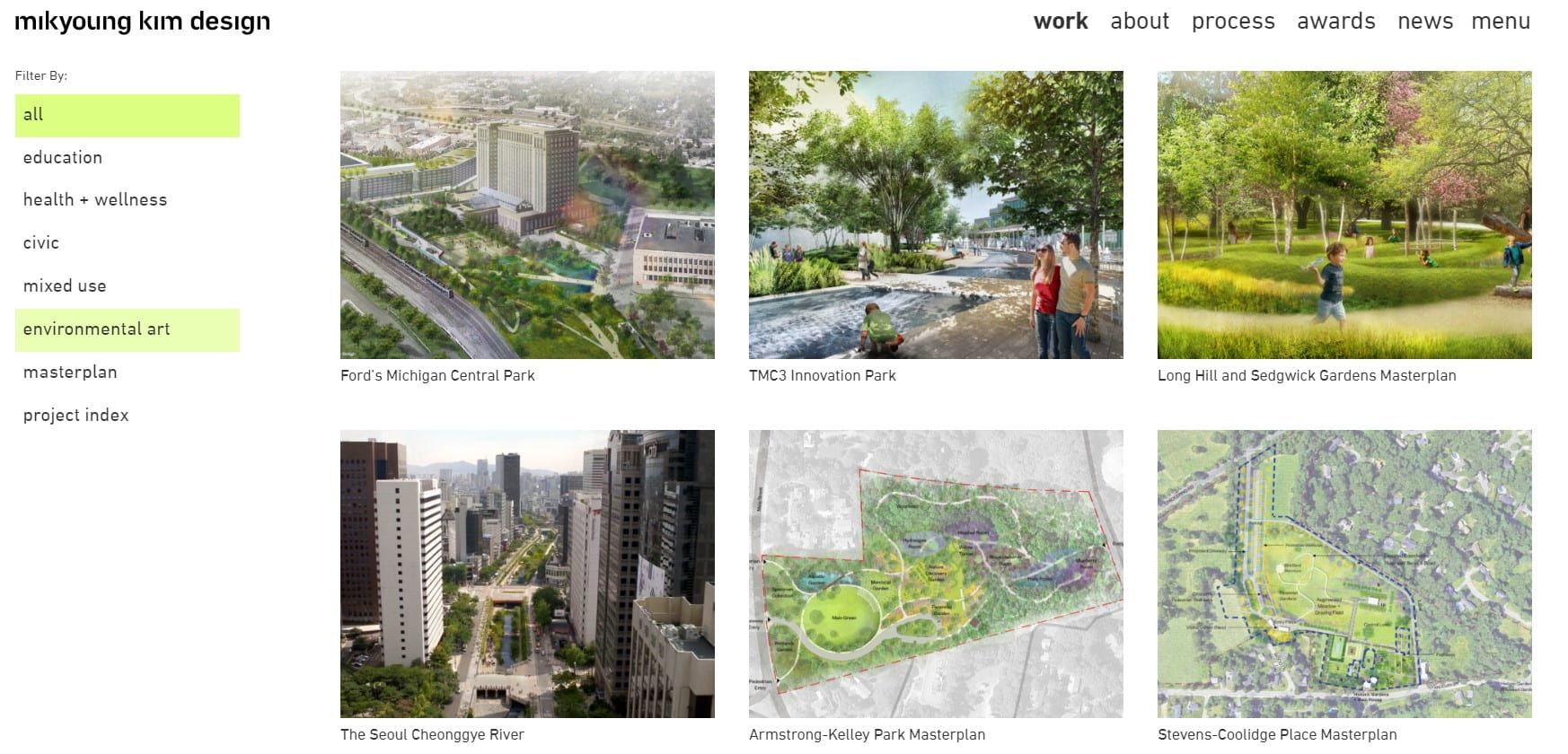
Landscape projects by Mikyoung Kim Design firm (Source: https://myk-d.com/)
Not only should the projects be your best ones, but what is also important is to choose those that are relevant and aligned to the architecture firm’s profile. Choosing your projects is as important as choosing the architecture firm you want to apply to. The projects in your portfolio when applying to a landscape architecture firm should be different from the projects you use when applying to a construction firm. You can highlight projects with strong landscape elements, showing them in different drawings, for the former and more construction and technical drawings for the latter. Another element you should consider is the style the firm has adopted if any, and the design philosophy of the architecture firm.
6. The Newest and the Best Projects Come First
Now you have chosen a list of projects. What should be the hierarchy of the projects?
Usually, students are advised to put their final year/ thesis project as the first project. That’s because the thesis project explores more design elements and skills than any other project in architecture school, and it is also the latest project hence a reflection of the student's entire skill set. If you already have work experience, you can consider adding the projects you have worked on during that time. Another way to arrange your projects is to create a narrative by following the timeline of the projects. Though if you are a working professional, it is better to give priority to your best works. Any non-architectural projects can be kept for last.
7. Have a Well-Structured Visual Composition
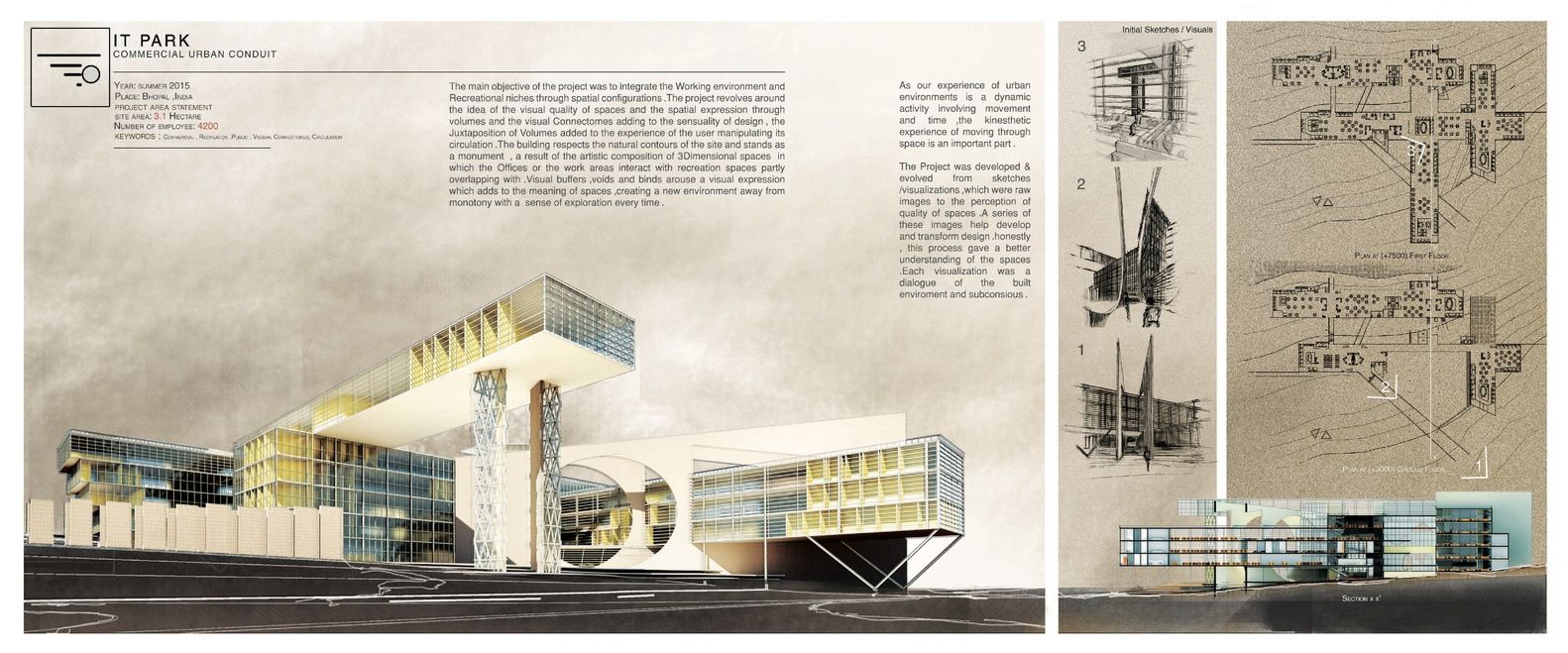
Portfolio by Asyush Jindal (Source: https://www.archdaily.com/)
Kanwal Jeet Singh, who is a professional consultant on computational design and the course mentor for our Parametric Modelling Course, shared a point all should remember: It is your work that will be doing the talking, so the graphical communication in the portfolio is of utmost importance to convey the right message about you and your skills.
Using a template for the architecture portfolio design gives consistency to the overall arrangement of the drawings, making the viewer more focused on each. Choose the most relevant drawings that are rich in information. You do not want the page overfilled with so many drawings.
The order of your projects is already demonstrating your skills; having a template enhances the readability and ease to identify each skill. For better visual navigation, give more focus to the best image that can help the viewer understand the project and your skills with a glance.
8. Never Forget Your CV Page
A CV page includes vital information - including contact details, academic qualifications, and soft and hard skills. It should be appealing with the most important pieces of information getting the right visual focus. The CV page is usually the first page of the architecture portfolio, hence it is the first glimpse of you and your skills. It is often through CVs that the firms filter out the candidates with the right skills. Highlight not only the technical skills but also relevant soft skills, as they are important to design professionals.
Advanced fields like Building Information Modelling (BIM) require almost equal levels of technical and soft skills. So it’s best to start developing your soft skills as early as you can.
9. Highlight Skills and Connect to CV
You now have a CV with all your soft and hard skills listed. But are those reflected in your projects? You should be able to illustrate these skills visually through the projects. A portfolio is a mode of visual representation of your capabilities. If you stated in the CV that you can use Adobe Photoshop, add an image that can support this - for example, a photo collage or a project visualisation.
10. Pay Attention to the Details
We, as architects, know how important the details are. But while creating an architecture portfolio, it is so easy to miss out on them as one pays more attention to the larger elements. The details here refer to things like font, hierarchy and grammar. Of course, there are more than these three!
When it comes to fonts, avoid using those deemed unprofessional or distracting. There is no need for multiple fonts too; choose neat and crisp fonts that will not take away visual attention from the images. If you have any writing pieces, e.g. project descriptions and notes, ensure the grammar is correct. We have talked about hierarchy in the paragraph above. The target is simple – create a composition that indicates visual navigation from image to image.
11. Have the Right Content for Your Architecture Portfolio
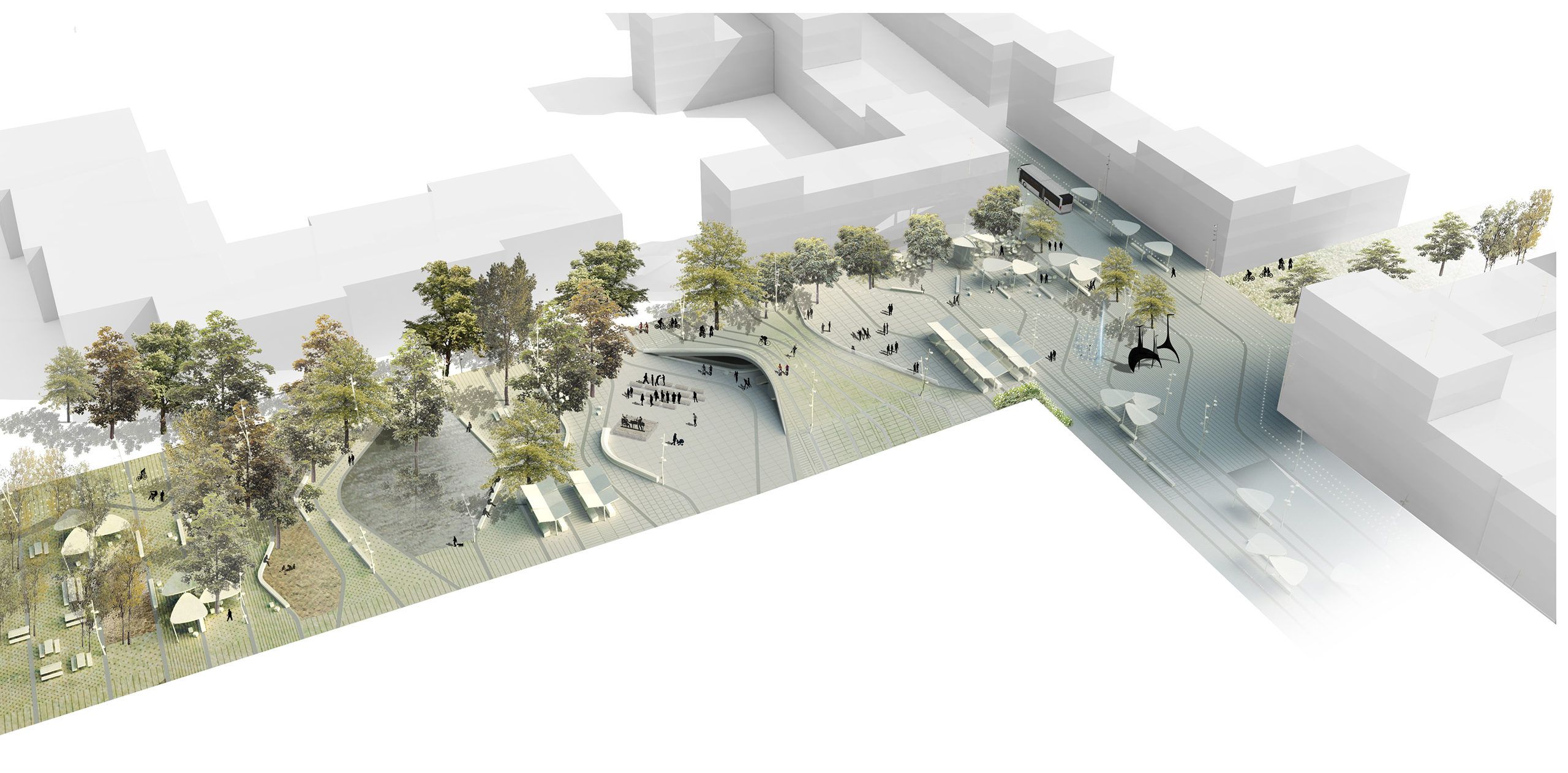
axonometric 3D model of Plaza Furuset project by Mendoza Partida (Source: http://mendozapartida.com/)
The best architecture portfolio contains the most relevant projects that highlight your skills. But how do we define the relevancy of the skills or projects? Kanwal also shared a simple tip: Create a Venn diagram with your best works on one side and the firm’s requirements and styles on the other; the intersection between these two is what (projects) you should have in your portfolio.
The projects included in the portfolio should be diverse while keeping the number of projects to 3-5 to show the diversity in the skillset, as shared by Neha Sadruddin, a BIM specialist at BIG and a course mentor for our BIM professional course. The same can be said for images for each project. Drawings like plans and sections are must-haves as they show design information. Further support them with diagrams and sketches that explain the site analysis and design process. Moreover, you can include photos of physical models and mock-up studies, carefully photographed for the best quality. Like sketches and diagrams, they also present how you developed the design. These are necessary for storytelling - what the project is about, the challenges in the project and how you overcame them along with the research and the process.
Group projects are additional choices, but you should clearly state your duties during this group project. You can also highlight any work experience with projects you worked on during this work period. For most fresh graduates, the most relevant and latest work experience will be architectural internships.
Non-architectural projects, on the other hand, can indicate your interests and other art and design skills. They can be painting, woodwork or even graphic design.
12. Review and Update
Last but not least, always remember to review and update your architecture portfolio from time to time. If you have changed your choice of firm, then you may need to edit your portfolio to adapt to the new firm’s style and requirements. Or you could have learnt new software and worked on polishing your projects. Then an update is necessary. The architecture portfolio is not a one-time project!
When creating your architecture portfolio, keep in mind that you need to impress your potential employers with in-demand skills in your CV and portfolio.
Novatr offers courses on the two most in-demand skills in the AEC industry– BIM Professional Course and Parametric Modelling Course – both taught by industry experts with years of real-world experience working in the industry. You will also get to work on real-life projects, which will undoubtedly be good additions to your portfolio. You are not just saying you know BIM or parametric modelling, there are projects to prove it.
If you are interested to know more about BIM and parametric modelling, our Resources page has plenty of informative reads on these topics and more.

Join 100,000 designers who read us every month
